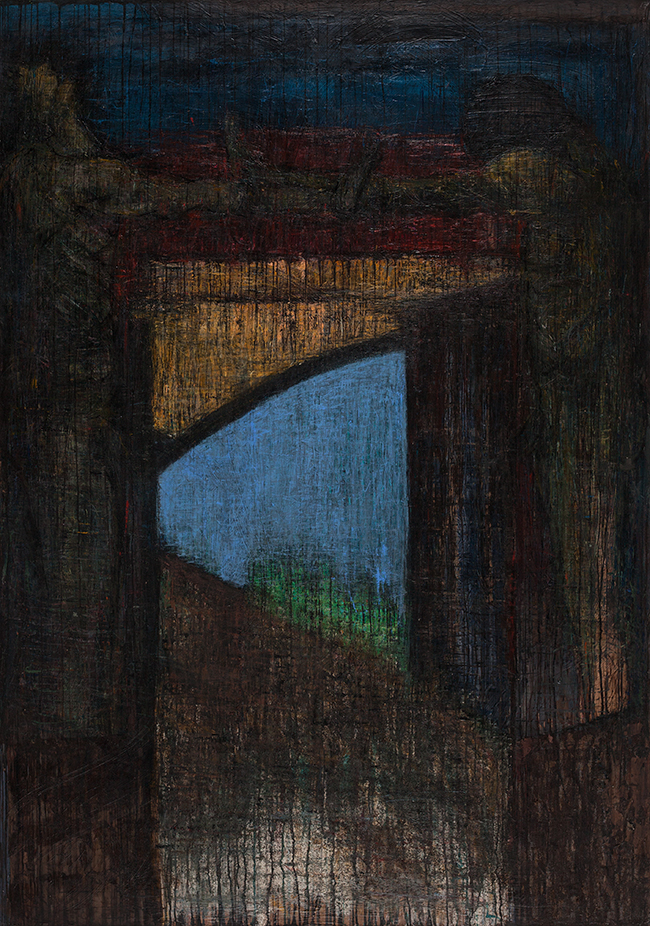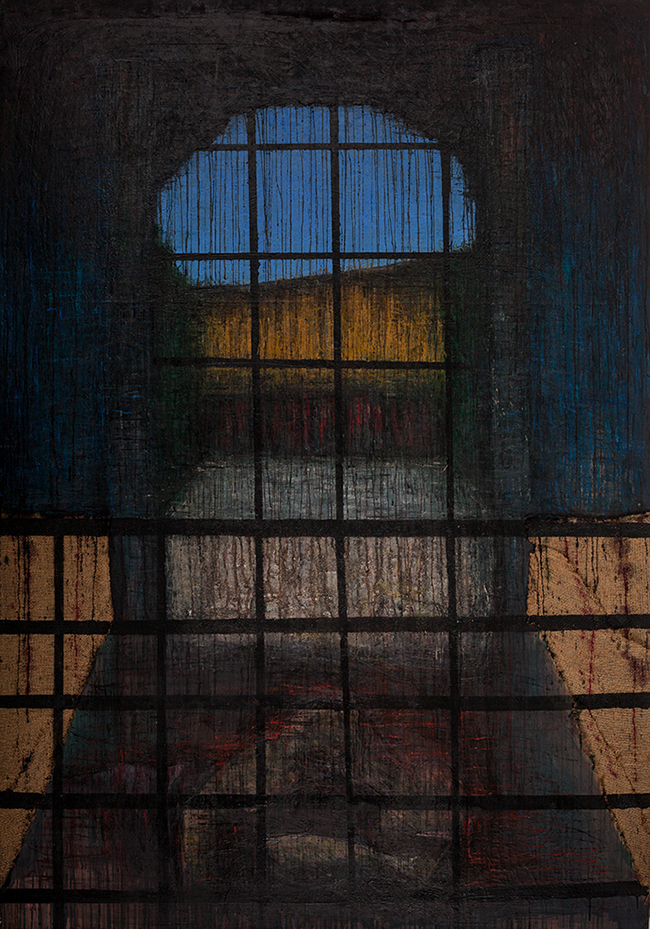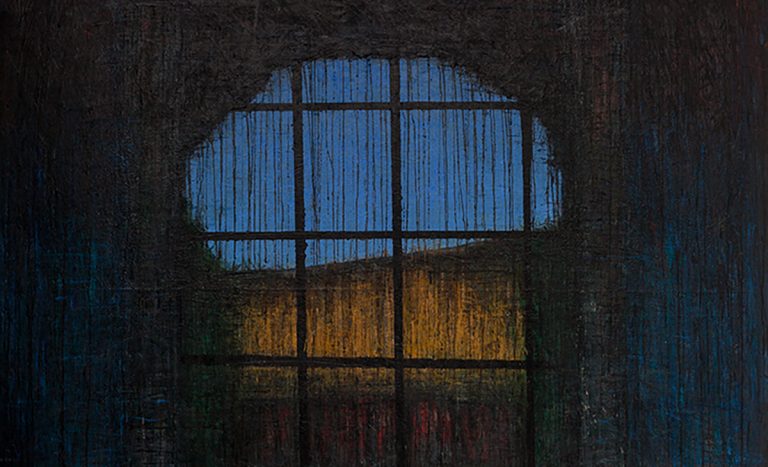Katerina Tsitsela’s creative journey bridges painting and engraving, immersing viewers in a deep reflection on the intricacies of human emotion and perception. Her art transcends the typical representation of landscapes, instead crafting what she refers to as “internal landscapes” or “landscapes of the soul.” Each piece is steeped in introspection, filled with shadowed moments where bursts of light symbolize hope or insight. The figures that populate her paintings embody these contrasts, representing the existential challenges we all face. Tsitsela aims to uncover truths that lie beyond the material world, transforming each canvas into a space where emotional depth and physical elements intersect. By incorporating raw materials like cement, she adds a tactile quality that brings her works to life, imbuing them with the intense energy of her process.

A Dance Between Light and Shadow
Tsitsela’s art is a powerful interplay between light and dark, a visual metaphor for the internal struggles we all experience. Her shadowy atmospheres create a sense of uncertainty, yet beams of light emerge, offering brief moments of understanding or resolution. This delicate balance between light and darkness reflects the constant push-and-pull of human emotions, capturing the fragility of clarity in the midst of inner turmoil.
Her figures often lurk in the shadows, partially hidden and ambiguous. These figures are not passive—they engage directly with the viewer, inviting introspection. They serve as metaphors for the concealed or suppressed parts of our psyche, challenging us to confront our own complexities. Through this, Tsitsela’s art becomes a personal dialogue, asking each viewer to engage with their own internal battles.

The Power of Texture
A defining feature of Tsitsela’s work is the physicality she brings to her canvases. Her use of materials like cement gives the surfaces a raw, almost rugged texture, amplifying the emotional landscape she explores. Her broad, dynamic brushstrokes and earthy color palette create a sense of primal energy, drawing viewers into the heart of the emotional intensity she conveys.
The tones she favors—rich browns, deep greens, and muted blacks—evoke the natural world but also carry the weight of human experience. Occasional flashes of brighter colors, like sharp yellows or whites, break through the somber tones, offering fleeting moments of light that punctuate the heavy atmosphere. These bursts of color, though brief, provide emotional release and clarity, hinting at moments of realization in an otherwise turbulent emotional environment.

An Invitation to Engage
Tsitsela’s paintings don’t offer simple interpretations or easy comfort. Instead, they demand active engagement from viewers. Her figures do not resolve the struggles they represent; they embody them. The contrast of light and shadow, paired with the rough textures of her materials, creates an intense emotional landscape that challenges the viewer to look inward and reflect on their own perceptions.
The figures in her work, often obscured and mysterious, invite viewers to bring their own experiences into the interpretation. This open-ended nature allows each person to find a unique narrative within her paintings. It’s this interpretative freedom that gives her work a timeless quality—it evolves as the viewer returns, revealing new meanings with each encounter.
The Relationship Between Material and Gesture
In recent years, Tsitsela has pushed her exploration of material even further, moving to larger canvases and incorporating more natural elements. This shift has allowed her to delve deeper into the creative process itself, emphasizing the physical act of painting. For her, the brushstrokes and materials—whether cement, canvas, or natural pigments—are not just tools but integral parts of the story. They hold the history of her gestures, capturing the movement and energy of her process within the final work.
These paintings are more than mere visual representations; they are the physical remnants of her creative journey. The marks of her hand, the layering of textures, and the flow of energy all remain embedded in the artwork. This focus on the act of creation itself mirrors her broader exploration of the self—her works reflect the constant tension between clarity and chaos, between the search for understanding and the inevitability of uncertainty.
Conclusion
Katerina Tsitsela’s paintings offer a profound exploration of the inner self, using light, shadow, and texture as tools to navigate the emotional landscapes we all face. Her use of raw, natural materials combined with her deep understanding of human perception and emotion results in work that is both intensely personal and universally relatable. The tension between darkness and light serves as a metaphor for the constant battle for self-awareness, inviting viewers to confront their own inner landscapes and find meaning within the chaos. Through her art, Tsitsela opens a space for introspection, urging us all to reflect on the delicate balance between clarity and disorder.

